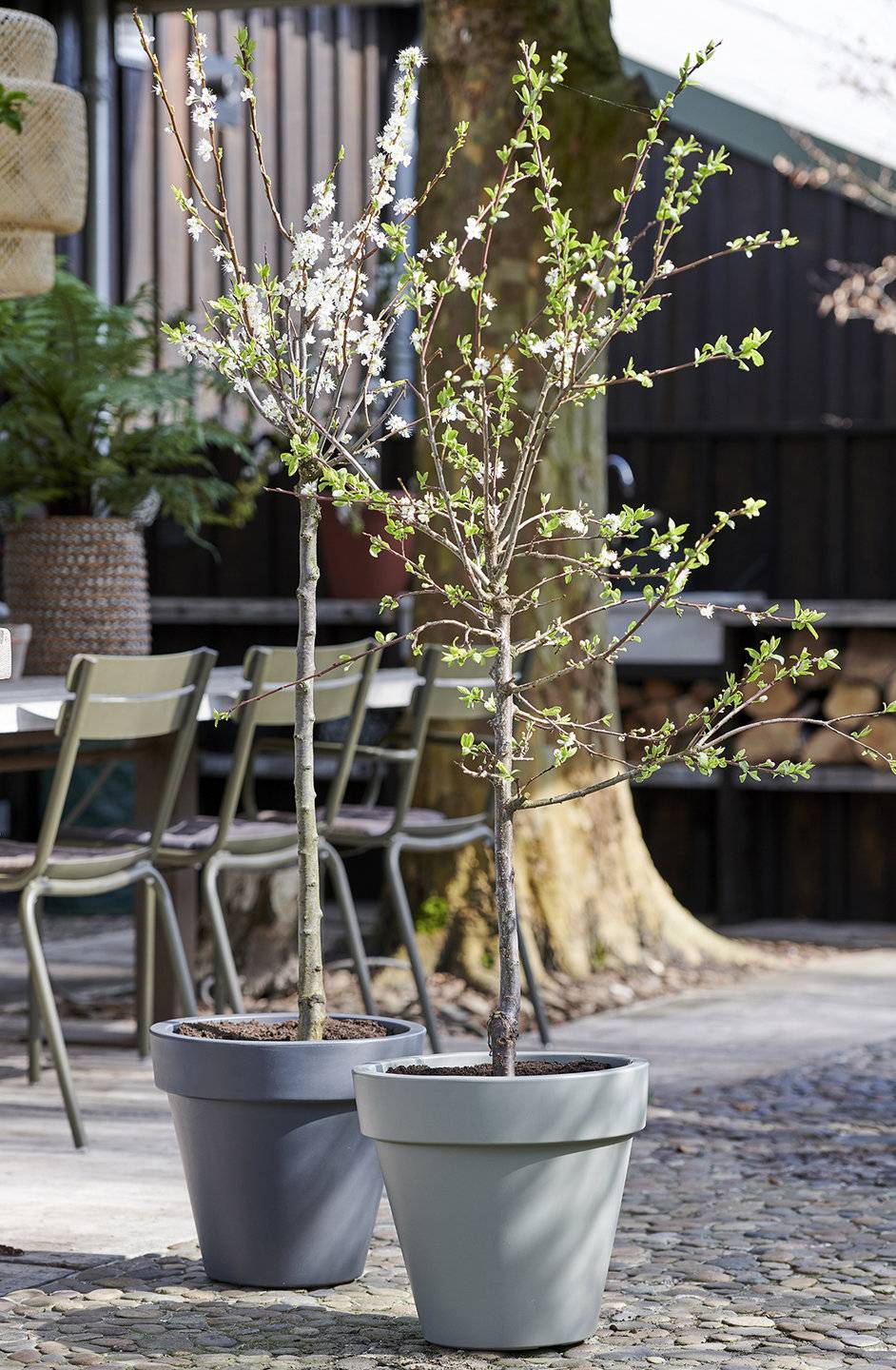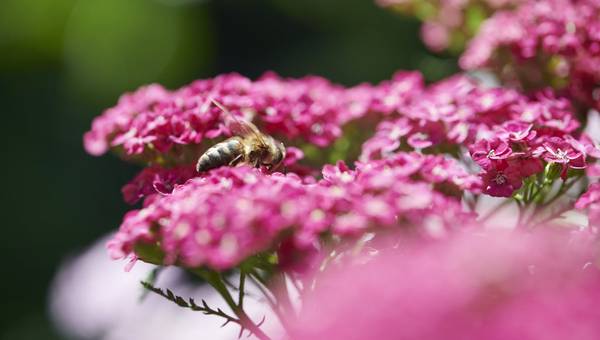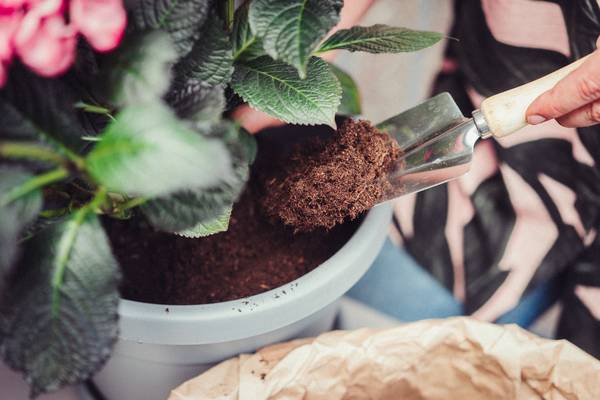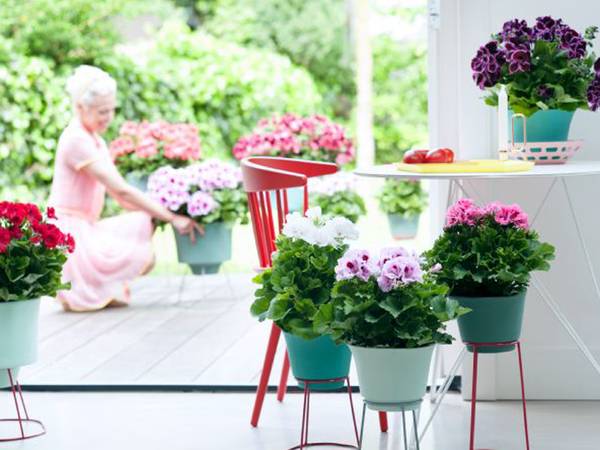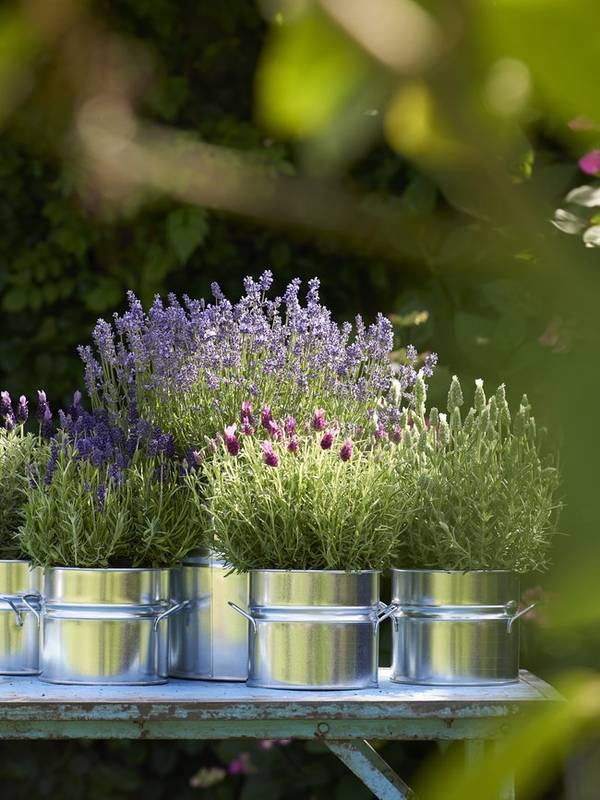
Quite a few poems have been written about plum blossom. It is one of the most appealing flowers with five white petals and a sparkling heart with white stamens bearing yellow balls of pollen. The plum tree (scientific name: Prunus domestica) is a very attractive specimen. A fairly slender trunk is topped by an extremely elegant crown with branches that grow both upwards and sideways. A plum tree is usually pruned back to about five metres, although it can easily grow to be 12 metres high and 10 metres wide in the wild. Depending on the variety, you can harvest between July and the end of September. The fruit are yellow, green, red or purple with a white sheen, depending on the cultivar.
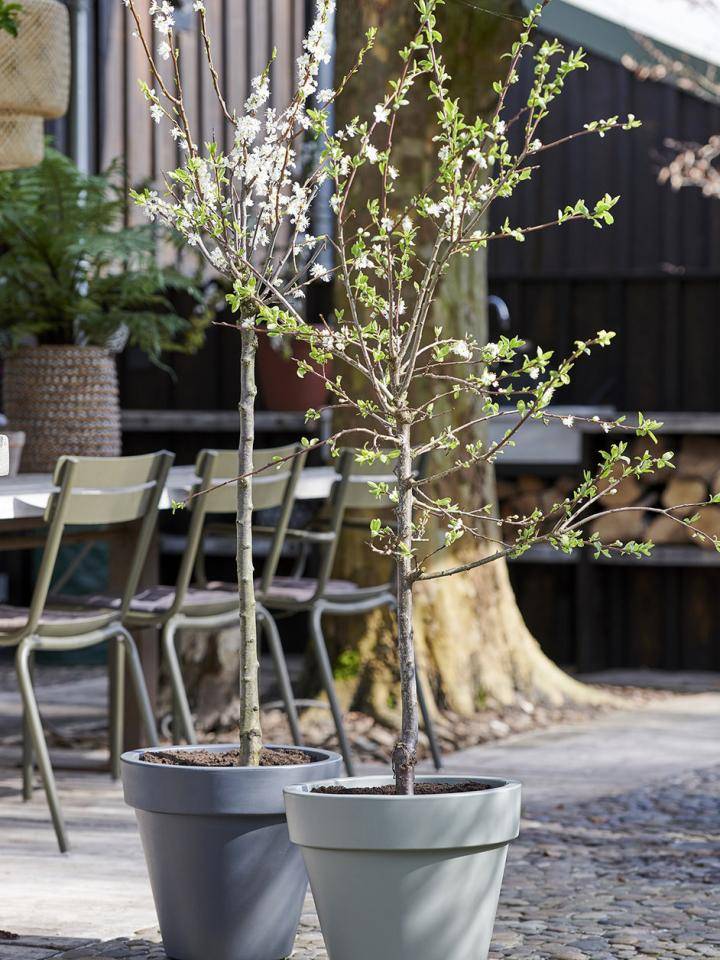
Care tips
- Plum trees like to be in full sun in a somewhat sheltered spot.
- Plant a plum tree deep so that it is firmly secured in well-draining soil. They can also be trained against a wall or fence.
- Plum trees need slightly more food (organic fertiliser once a month in spring) and water than other fruit trees.
- Prune in late summer after harvesting.
- Blossom and night-time frost? Cover the tree with fleece or spray the blossom so that it freezes. This will give you a good chance of harvesting plums later.
Origin
The plum tree is a member of the Rosaceae family, and was one of the first trees to be cultivated by humans. Three of the most common cultivars do not grow in the wild, but did exist around ancient settlements. And by ‘ancient’ we mean 10,200 years BC. People have been eating plums for a very long time, either fresh or dried. The tree originated in eastern Europe and the Caucasus and spread east and west across the northern hemisphere.
Symbolism
- In Japan the plum blossom emerges even when there’s still snow on the ground. As a result the Japanese believe that the tree represents persistence in the face of adversity.
- Old plum tree branches are often twisted and mossy. After pruning they can enjoy a second life in a vase #ikebana.
- Slivovitz - plum brandy with an impressive alcohol content of between 47 and 55% - is phenomenally popular in the Balkans and central Europe.
